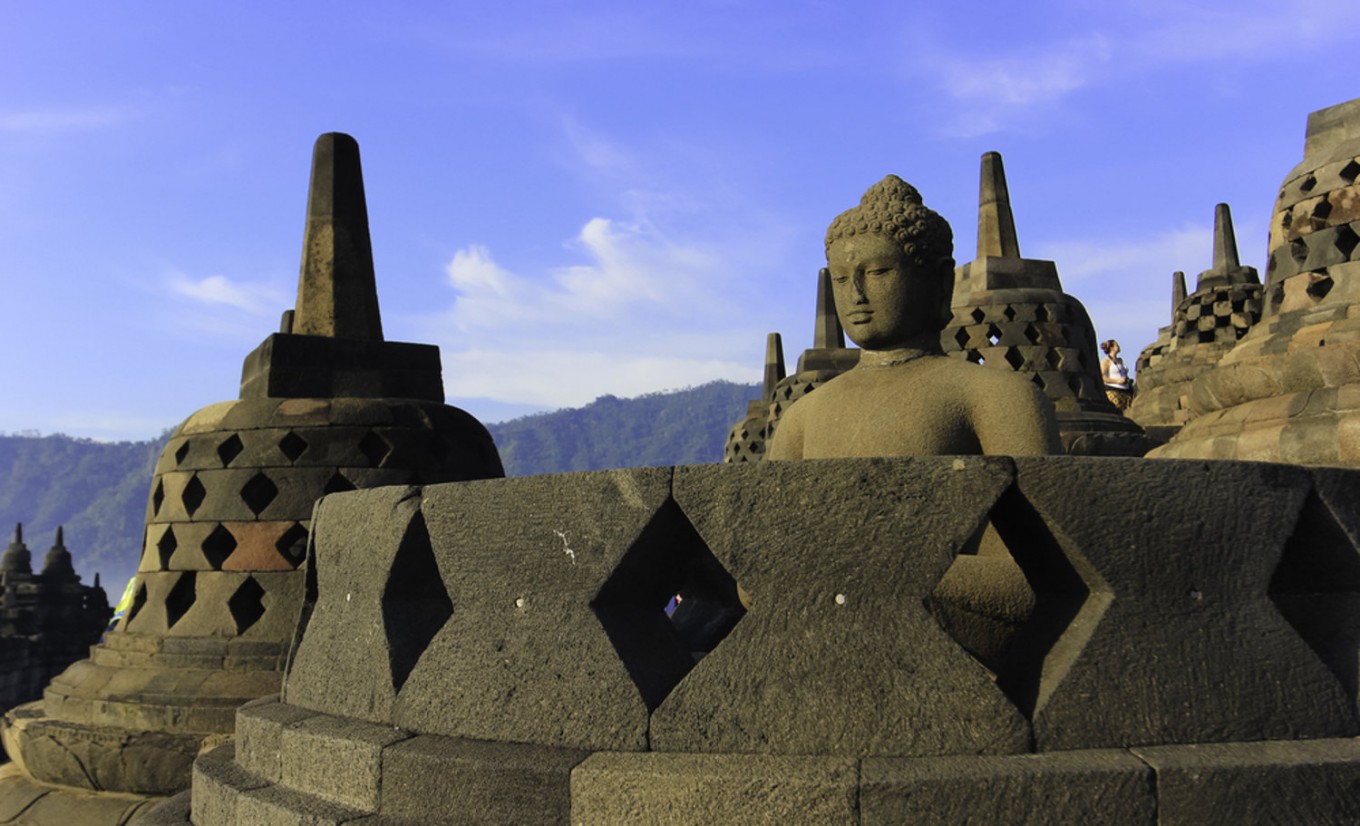Popular Reads
Top Results
Can't find what you're looking for?
View all search resultsPopular Reads
Top Results
Can't find what you're looking for?
View all search resultsUI archaeology professor weighs in on Borobudur's 'chattra' restoration
The University of Indonesia’s (UI) archaeology professor, Agus Aris Munandar, said there needed to be a thorough study prior to restoring the chattra (an umbrella-shaped form symbol usually placed atop religious symbols in Buddhism and Hinduism) on the top of the main Yasthi stupa at Borobudur temple.
Change text size
Gift Premium Articles
to Anyone
 The University of Indonesia’s (UI) archaeology professor, Agus Aris Munandar, said there needed to be a thorough study prior to restoring the chattra (an umbrella-shaped form symbol usually placed atop religious symbols in Buddhism and Hinduism) on the top of the main Yasthi stupa at Borobudur temple. (Shutterstock/File)
The University of Indonesia’s (UI) archaeology professor, Agus Aris Munandar, said there needed to be a thorough study prior to restoring the chattra (an umbrella-shaped form symbol usually placed atop religious symbols in Buddhism and Hinduism) on the top of the main Yasthi stupa at Borobudur temple. (Shutterstock/File)
T
he University of Indonesia’s (UI) archaeology professor, Agus Aris Munandar, said there needed to be a thorough study prior to restoring the chattra (an umbrella-shaped form symbol usually placed atop religious symbols in Buddhism and Hinduism) on the top of the main Yasthi stupa at Borobudur temple.
“[The study is needed] to provide stronger back-up, and [to give facts] on whether or not there is any data about the existence of chattras on top of the main Yasthi stupa at Borobudur temple,” he told tempo.co (https://tekno.tempo.co/read/1051320/soal-pemindahan-chattra-candi-borobudur-begini-kata-arkeolog-ui) via text message, last week.
The temple was built by the Syailendra Dynasty in the ninth century. According to historical pieces of evidence, Borobudur was abandoned in the 14th century, as Hindu and Buddhist kingdoms relinquished power in Java, just in time when Islamic influence started to penetrate the island. The world’s collective realization of the temple’s existence was in 1814 when it was discovered by Sir Thomas Stamford Raffles, who held the position of British governor general of Java.
Currently, the chattra in question is kept in the Karmawibangga Museum, in the Borobudur park complex. In December 2017 Education and Culture Minister Muhadjir Effendy said there was problem in restoring the chattra. “We have no problem with it. Now it’s a matter of technicalities and how we are going to follow this up,” he said in December.
Agus said, “If the chattra is to be returned to Borobudur, we need to revisit the idea. The Dutch said that there were no records of any chattras ever being on the top of the stupa, however, perhaps now there is new data.”
Read also: Borobudur's first visitors in 2018 honored with elephant ride
Agus also explained that the chattra had fallen after being struck by lightning. Dutch archaeologists then failed to reinstall it completely. “They did not restore the chattra. If there is a debate now, it means that a new study about the order of chattra on top of the main Yasthi stupa of Borobudur temple is needed. Let’s study this,” Agus encouraged.
Muhadjir wants the chattra restoration to be arranged well, as a number of Buddhist figures have requested it, “Many Buddhist figures, not only from Indonesia but also from other parts of the world have requested that the chattra be put in its original place, the sooner the better.”
Marsis Sutopo, an archaeologist who is also head of the Borobudur conservation office, said in several countries such as India and Myanmar, there were still a number of chattra shapes. He also elaborated that when the Borobudur temple was restored by Van Erp in the year 1907-1911, stone remains were found and believed to be parts of the chattra. Van Erp then reconstructed the stones and restored them. However, due to many doubts, the stones were taken down and placed in the museum.
Marsis said restoring the chattra could not be done carelessly. The temple, according to him, is a world heritage that has elements to be safeguarded, mainly its integrity and authenticity.
“If we are to install the chattra, we need to carry out thorough research so we don’t incorrectly reconstruct it,” adding that the restoration process should also adhere to restoration principles so it’s safe for visitors. (asw)






